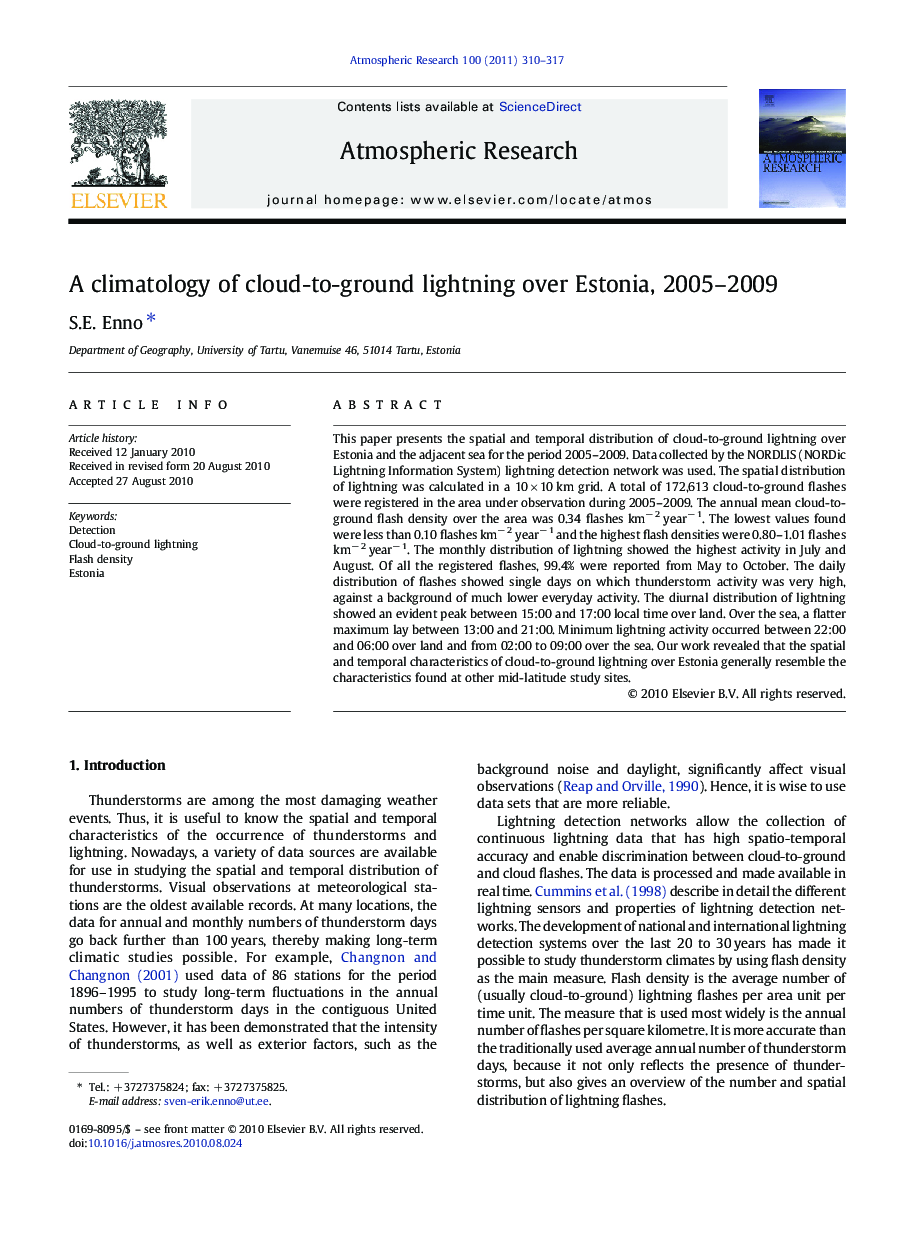| Article ID | Journal | Published Year | Pages | File Type |
|---|---|---|---|---|
| 4450376 | Atmospheric Research | 2011 | 8 Pages |
This paper presents the spatial and temporal distribution of cloud-to-ground lightning over Estonia and the adjacent sea for the period 2005–2009. Data collected by the NORDLIS (NORDic Lightning Information System) lightning detection network was used. The spatial distribution of lightning was calculated in a 10 × 10 km grid. A total of 172,613 cloud-to-ground flashes were registered in the area under observation during 2005–2009. The annual mean cloud-to-ground flash density over the area was 0.34 flashes km− 2 year− 1. The lowest values found were less than 0.10 flashes km− 2 year− 1 and the highest flash densities were 0.80–1.01 flashes km− 2 year− 1. The monthly distribution of lightning showed the highest activity in July and August. Of all the registered flashes, 99.4% were reported from May to October. The daily distribution of flashes showed single days on which thunderstorm activity was very high, against a background of much lower everyday activity. The diurnal distribution of lightning showed an evident peak between 15:00 and 17:00 local time over land. Over the sea, a flatter maximum lay between 13:00 and 21:00. Minimum lightning activity occurred between 22:00 and 06:00 over land and from 02:00 to 09:00 over the sea. Our work revealed that the spatial and temporal characteristics of cloud-to-ground lightning over Estonia generally resemble the characteristics found at other mid-latitude study sites.
